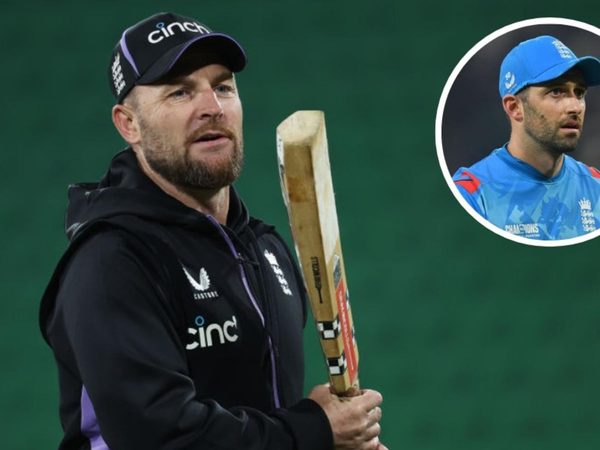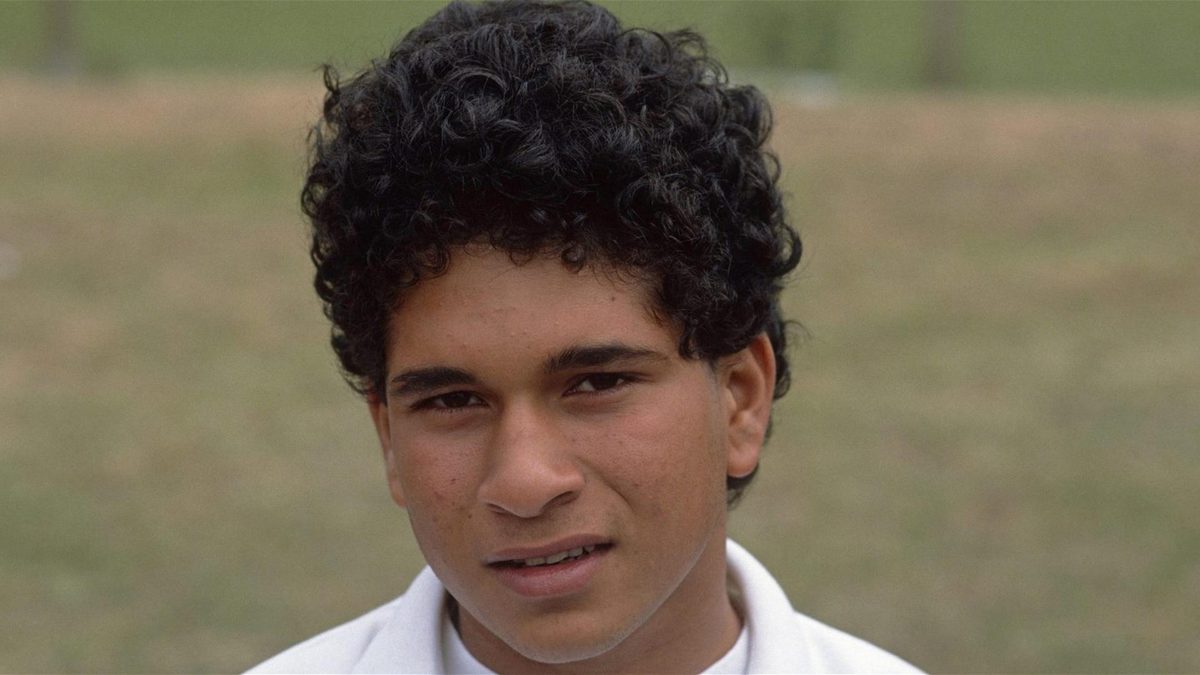
From Graeme Hick to Michael Clarke, Phil Walker and Sam Stow profile 10 cricketers who arrived as young batting prodigies and later went on to take giant strides on the biggest stage.
First published in 2007
First published in 2007
1. Sachin Tendulkar
The arrival of a kid in a man’s world enchants us like nothing else. Precocity brings its own thrill, because it celebrates the purity of unfettered talent, unveiled to us without the blemishes of those mundane and mortal marks that come later, of ‘development’, of ‘hard work’, and of grizzled, grafting ‘achievement’. It carries nothing before it with the promise of everything to come.
Sachin Ramesh Tendulkar was 15 years and 232 days old when he made his debut for Bombay. By the end of that day, the boy had become the youngest centurion in first-class history. So it begins.
It was late 1988. It didn’t take long for news to reach the corners of the cricketing world. We’d heard the name before. Earlier that year an unbroken 664-run school partnership with Vinod Kambli, another teenage starlet and future Indian batsman, had smashed the world record partnership for all cricket at all levels.
The story of an Indian boy-genius, with wrists borrowed from the gods and pads on loan from the demi-god Gavaskar, was gathering pace.
A year later, the 16-year-old was batting in a Test match against Wasim and Waqar, and getting pinned on the helmet. He would pick himself up, of course, and caress a couple of fours. He didn’t get many that day, but he didn’t need to. Talent without steel is not enough, yet when Sachin dusted himself down, smiled, and readjusted his headgear, everyone knew what it meant.
“Headingley stands for Sachin Tendulkar!”
When a young Sachin, batting for Yorkshire, took the Sunday League by storm in 1992 🔥pic.twitter.com/TDiHj9L7VK
— Wisden India (@WisdenIndia) August 3, 2020
At 17 he was playing at Lord’s, making a few runs and taking a catch of breathtaking impudence (long-off, ball goes miles up, he sprints and catches it one-handed about a foot from the ground without breaking stride). Then at Old Trafford in the second match Tendulkar made his maiden Test hundred, a mature rearguard to defy a rampant England bowling attack, and Eddie Hemmings. English fans had got their first taste of those trademark back foot cover drives, and to-die-for flicks through mid-wicket. Okay, so he repelled the home side, but we couldn’t care too much. As Richie Benaud said: “There’ll be plenty more centuries to flow from his bat… I just hope I’m around to see them.”
Richie would get his wish. That winter he would make 148 on Perth’s grass-less death trap against Australia’s quicks, and Benaud would describe it as one of the purest knocks he had ever seen. Don Bradman’s wife, so the story goes, was watching the TV at the time, and called the old boy into the room to watch the young pretender. The Don would later say that he’d seen his modern incarnation.
Early Sachin was a heady fusion of youthful thrill-seeker and gnarled run-getter. He made his scores with a heavy bat, a great brain and a flawless technique. He was strong everywhere. He had every shot. He had great flair, and great style, but the thrilling impermanence of other shot-makers didn’t apply to someone as good as this. In those early days Sachin just batted. He was always batting. And it all was so inevitable.
But as happens with genius, the people want it all. The centuries flowed, and Tendulkar found himself lugging the whole of India on his back, plus ten other mortals in whites, resting on his 5ft 5in frame. A boyish entertainer still lurked beneath the ice-cold exterior – worn to stay sane from the whirligig world his public built around him – but the inner dasher had to go. It was probably necessary. But it was slightly sad. Tendulkar became a run-scorer, not a shot-maker. He was just about as good, but not quite as grand.
So the romantic pined, and still does, for the swashbuckling Sachin of 1990, but the realist knew it had to change. India would down tools when he batted and crowd around a TV set to catch him, and still they do. The new sober Sachin, ensconced by the end of the Nineties, reflected the position he occupied in his country’s affections.
Age takes its revenge. He is 34 now, and not as quick with his hands, after the elbow injuries of the last few years. He is slower on his feet. And 17 years playing and existing on the edge must lead to battle fatigue. And so the aura remains, but the light has dimmed.
At the time of writing Tendulkar has just missed two straight ones at Lord’s, lbw twice. It would be great if he could finish his final tour of England as he signed off his first one, with an unabashed hundred full of chunky drives, cheeky flicks and scything cuts. But the realists, and Sachin would count himself among that number, would settle for any hundred.
The old man deserves it.
– PW
2. Graeme Hick
Hick hypotheses abound. But let us put those unanswerable, age-old questions on the back burner for now. Sheer weight of runs show the Zimbabwean-born naturalised Englishman to have been one of the best batsmen of any generation.
Born and raised in Salisbury (now Harare), Hick’s credentials were established at the famous Prince Edward Boy’s High School, and he was picked in Zimbabwe’s 1983 World Cup squad as a 17-year-old. But the extent of his talent was only truly unfurled when he made 405 for Worcestershire against Somerset in 1988. A man not untouched by genius himself, Ian Botham was overwhelmed by what he saw: “I can’t imagine you will ever see a greater innings than Graeme’s today – he’s certainly the best white batsman I’ve seen.” He had made 1,000 runs by the end of May that year. He was 21.
Happy birthday, Graeme Hick!
Here’s him claiming a spot on the Lord’s Honours Board in 2000 with a century against Zimbabwe, the last of his six Test tons.pic.twitter.com/upcGrOfVrN
— Wisden (@WisdenCricket) May 23, 2020
By the time Hick qualified to play for England in 1991, he’d already helped himself to 57 first-class hundreds. Having counted down the days on his sentence, he arrived on the international scene as the perceived saviour of a struggling team. However, just four tortuous Tests later – mauled by a crack West Indian attack – he was dropped. Many felt the automated weekly plundering of county attacks had dulled his edge. For the next decade he was in and out of the side as the England management sought quick fixes to terminal problems.
Uniformly imperious in county cricket, his performances for England showed a perplexing diffidence that was alien to the essence of Hick the batsman, and it speaks volumes for the man’s ultimately transient brilliance that his international career of 65 Tests and 120 ODIs seems – to all but the staunchest Sartrean – an insult to his talent.
Now 41, Hick has just become only the 16th player to pass 40,000 first-class runs – with the small matter of 134 centuries to his name – and stands alongside Graham Gooch as the only man to have notched 20,000 List ‘A’ one-day runs. A victim of circumstance as much as his own shortcomings, it would be no surprise to see Hick notch another ton if he were afforded one more try at the highest level. But, even for the greatest talents, time does not wait.
– SS
3. Hasan Raza
Success for most fourth form boys is the pleasure of a gasper and a break-time grope with Jarvis Cocker’s Deborah behind the bike sheds, so when Hasan Raza was called up to Pakistan’s Test team to face Zimbabwe, allegedly aged just 14 years and 227 days (14!) we knew this kid was more than alright.
But like so many child stars, success was short-lived. A respectable 27 in his only innings of his debut Test hinted at a long and fruitful career at the highest level, but inconsistent form and impatient selection conspired to dispatch the youngster from the international scene almost as quickly as he had arrived.
Failing to make an impression from a handful of chances with the one-day side, he had to wait until 1998 to get his second chance at the highest level. Three hundreds with the under 19s in Australia was enough to convince the selectors that Raza was ready to take on the touring Zimbabweans once more, but another poor performance –registering just three in his only innings of the series – was all they needed to send him packing again.
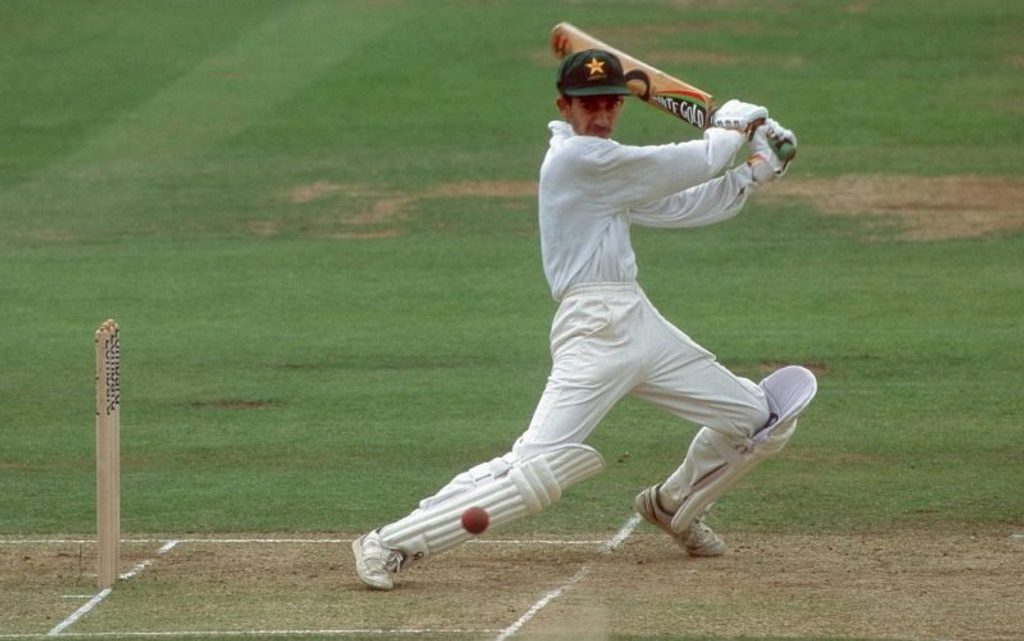 Hasan Raza batting for Pakistan Under-15s during the 1996 U15 Challenge Cup Final against India at Lord’s
Hasan Raza batting for Pakistan Under-15s during the 1996 U15 Challenge Cup Final against India at Lord’s
And in the style of many a man whose youth is truncated by overachievement, Raza rather lost his way. Following in the classically unhinged footsteps of previous kid stars (Michael Jackson, Judy Garland, Macauley Culkin et al), in August 2000, Raza and team-mates Shahid Afridi and Atiq-uz-Raman were caught with a gaggle of girls in their Karachi hotel rooms during a training camp, and despite insisting that the girls had merely “come to collect autographs” (one of the great euphemisms) the three were banned from the upcoming ICC Champions Trophy. Further disciplinary problems have dogged the now 25-year-old’s career.
Having fought his way back into contention once more, an impressive display against the Australians in 2002 proved to be yet another false dawn, though having played for the national side as recently as England’s visit in 2005 (and with Pakistan’s middle-order by no means in the flower of youth) he may yet be back for another crack of the whip. After all, despite falling spectacularly short of early expectations, he still has time on his side.
– SS
4. Sir Len Hutton
The point about Hutton was that when he played, it wasn’t uncommon to find 50-year-olds grimly holding on in the first-class game. Cricket between the wars was an austere undertaking, and the game distrusted the inherent flamboyance associated with youth.
But then, exceptions must be made for greatness. Even the renowned roughhouses of Yorkshire cricket had to give a 17-year-old prodigy his chance, and Hutton immediately made his mark at first-class level with five fifties and a maiden century – 196 against Worcestershire – in his first season. In 1936, during a drenched summer and on uncovered pitches, he completed his first 1,000 runs for a first-class season, and the following year he opened his shoulders, including a vicious 153 against Leicestershire on his 21st birthday. By the end of that campaign in ‘37, he had compiled 2,888 runs, and moved up to make his Test debut. A year later, in his sixth Test, history would be made.
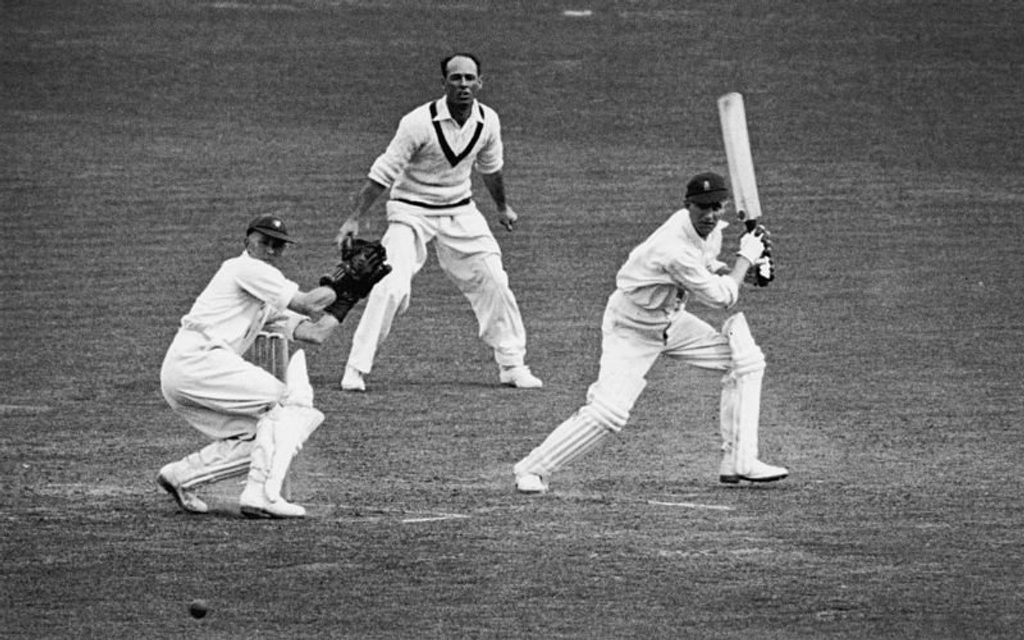 Sir Len Hutton in action during his marathon 364 at The Oval
Sir Len Hutton in action during his marathon 364 at The Oval
Len Hutton was just 22 when he repelled Australia’s finest at The Oval for 797 minutes and 842 balls, en route to the highest score in Test history. It wasn’t just his youth, or the sheer scale of the effort that made it great, or the concentration it required of one so young, or even the added pressure of having Bradman stood at slip watching his every move. Its greatness lay in its selflessness. This was a timeless Test, and Hutton resisted all his attacking and stroke-making instincts to play a wantonly epic innings, probably the most demanding and disciplined Test innings in history. All this from a boy of 22.
The record, snatched from Bradman’s grasp with a modest dab behind square to take him to 335, would stand until 1958, when another precocious 22-year-old took guard on a flat pitch in Jamaica. His name was Garry Sobers.
– PW
5. Lawrence Rowe
Lawrence Rowe, what a player. A Caribbean crackerjack, lethal off the back foot, a hardwired Richardsesque hooker in the few years before Sir Viv raised the bar. And yet a Test career that promised so much was effectively over by the time he was 26.
Back in ’72 Rowe was just another 22-year-old gunslinger from Kingston making his way. After a run of serious scores for Jamaica, the homespun kid was thrown the maroon cap for a Test debut at Sabina, and he responded with a double and single century to send his people berserk. Two years later, the golden boy played what is considered one of the great Test innings, making 302 chance-less runs against a strong England attack; two more hundreds in that series took his tally to 616 in seven knocks. At the time he had just turned 25, and the cricketing world was at his dancing feet. Sobers was coming to the end, and Rowe – magnetic, charismatic – was emerging. Yet within 18 months it was all over, a run of poor form (notwithstanding a blistering century in Australia against Lillee and Thomson in ‘75/76), and the all-powerful Richards, leaving Rowe on the sidelines. An unpredictable character, he fell away too quickly and drifted for three years, before making a brief, unresolved return in 1979.
Four years later in 1983, still in his early thirties but disenchanted with the game he had threatened to adorn, he regrettably took the filthy rand to tour apartheid South Africa, a decision which has left much of Jamaica still unable to forgive their once favourite son. A fleetingly great career had fizzled out. It was all rather sad.
– PW
6. Alastair Cook
It’s best just to list the achievements: A multiple record breaker at Bedford School; NBC Denis Compton Award winner from 2003-2006; former England under 19 captain, scoring two hundreds in 2004’s under 19 World Cup; Essex debutant in 2004, his maiden first-class century coming later that year; Young Cricketer of the Year as voted by the Cricket Writers’ Club after a double century against the touring Australians in 2005; a Test debut in early 2006 against India, making a hundred to become the youngest debut centurion for England since Peter May in 1951; two more Test hundreds that summer, including a first at Lord’s; a first Ashes hundred at Perth last winter; two more tons and counting in 2007.
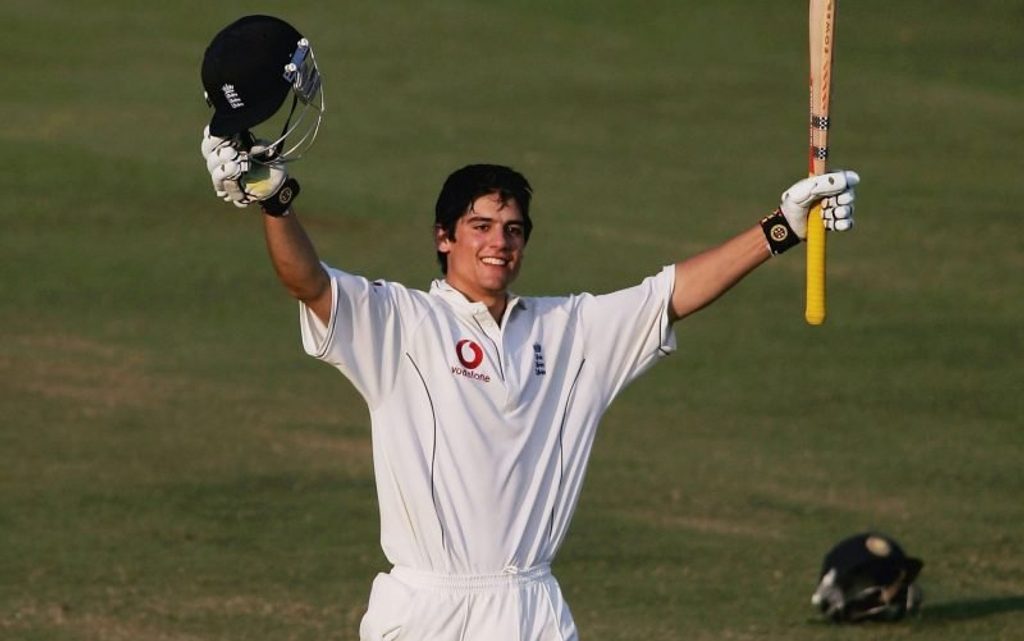 Alastair Cook celebrates after getting to his maiden Test ton in Nagpur
Alastair Cook celebrates after getting to his maiden Test ton in Nagpur
He turns 23 on Christmas Day. Only Tendulkar, Headley, Neil Harvey, Miandad, Bradman and Sobers had made six Test hundreds before the age of 23.
The boy was born to bat.
– PW
7. Arjuna Ranatunga
Most of us remember Arjuna Ranatunga as the portly principal of the 1996 World Cup winning side, but in the early days of Sri Lankan cricket he was the cocksure colt who made his nation’s first half-century in the Test Match arena, announcing the arrival of the island nation to cricket’s top table.
A gifted, prolific all-rounder as a schoolboy, the young Ranatunga turned heads at Ananda College in Colombo by scoring 315 not out and recording match figures of 11-24 in an under 14 match, and in 1982 the selectors had no hesitation in selecting the 18-year-old Arjuna as a middle-order batsman for Sri Lanka’s inaugural Test, against England in Colombo.
Coming in at 34-4, Ranatunga calmly negotiated the fiery pace of Bob Willis, putting on 99 with Ranjun Madugalle to announce himself on the world stage and become Sri Lanka’s first batting hero. It was an innings that at one point even threatened to hand Sri Lanka victory in their first match, but even in defeat Ranatunga had enjoyed a dream start to his career.
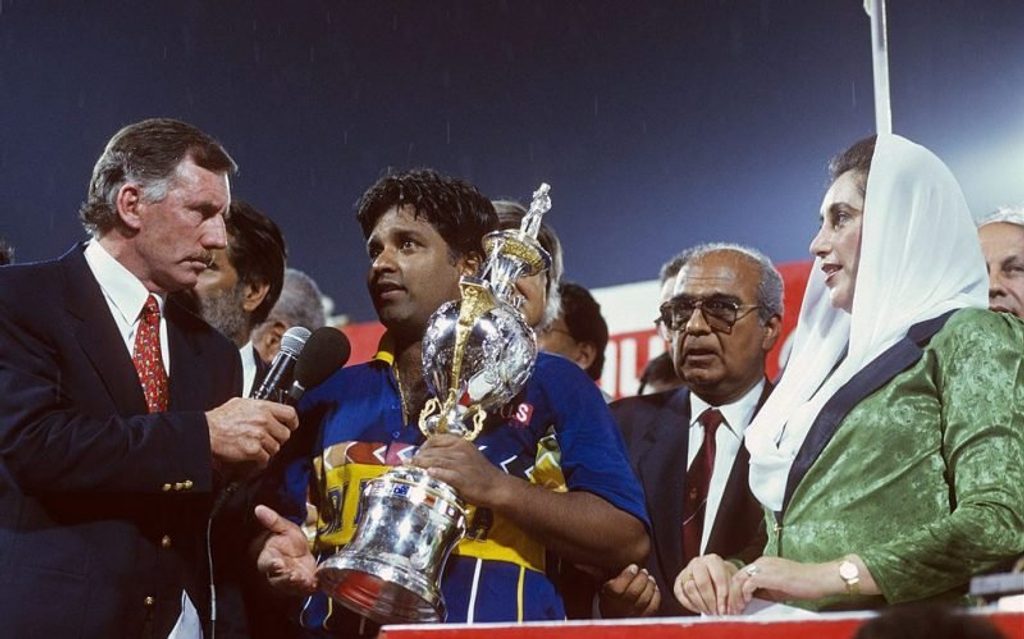 Arjuna Ranatunga led Sri Lanka to their first ever World Cup title in 1996
Arjuna Ranatunga led Sri Lanka to their first ever World Cup title in 1996
In time his captaincy became, perhaps, more important to the Sri Lankan team than his batting – the captain’s dogged defence and deft deflections were pushed out of the limelight by the bludgeoning brilliance of Sanath Jayasuriya and peerless production of Aravinda de Silva – but until his retirement, Ranatunga exuded the class and confidence shown in those early years. He was and remains the godfather of Sri Lankan cricket.
– SS
8. Stephen Peters
English cricket is littered with the names of prolific tyros who either didn’t make it, fell out of the game, or struggled to rekindle their early brilliance. Stephen Peters is one of many prime examples. Now at Northants, his third county after spells at Essex and Worcestershire, he has carved out a respectable career as an opening batsman with a first-class average around 32. Over his 11 years as a professional, he has developed a reputation as a player capable of scintillating knocks, electric runs of form, and extended, bouts of low scores.
But as a teenager, the name was known throughout the English game and was marked down for great things. A national age group player since the age of 14, he was the star of the England under 19 side that won the World Cup in South Africa in 1997/98 – a squad that featured future Test players Rob Key and Owais Shah in its top four – making a century in the final, a half-century against Australia and 92 versus Pakistan. The boy from Harold Wood returned to Essex with the words of Allan Border ringing in his ears, who said he was the best batsman in the tournament.
Peters had already made a hundred on his debut to become Essex’s youngest first-class centurion, but thereafter his progress was stunted. Trying to cement his position at Essex, he found himself batting at six despite opening throughout his early career (would that have happened to Ali Cook?), and the expected runs didn’t materialise. It is hard to imagine the demotion to six from his natural position as opener didn’t profoundly affect his confidence.
Working on a tip-off from Stuart Law, fellow Australian Tom Moody signed him for Worcestershire in 2002, but for three years Peters flattered to deceive. There were high moments – twin hundreds against Kent at Worcester in 2004, a brutal 165 against Somerset at Bath – but too many failures to push on for the higher honours many thought inevitable. Northants came calling in 2005, but a rough time with injuries and poor form left him at a career crossroads in mid-season 2006. A do-or-die hundred against Pakistan followed by a vengeful run-a-ball 178 against Essex secured his place, and this season the runs have flowed more consistently. Now 28, he is still one of the county game’s most attractive players, and when he’s in form, he looks like the player we all expected him to become. It remains a mystery why we haven’t been watching it every week for the last ten years.
– PW
9. Michael Clarke
With surf hair, swift wrists and a swagger bordering on arrogance, Michael Clarke burst onto the Test scene in 2004 with a debut 151 against India to confirm to the world what everyone in Australia had known for years.
Touted as a future captain of Australia before he’d even played a Test, the young ‘Pup’ honed his natural talent on the bowling machine at his dad’s indoor school, and was soon earmarked as a superstar in waiting. Bypassing the traditional period of schooling in state and county cricket, Clarke was thrust into the international arena in 2003 aged 21, racking up 208 runs in four ODIs before losing his wicket, and with an average of 45 after 112 games he is already on his way to being considered one of Australia’s greats in one-day game.
His debut Test ton further added to the golden image that the media were keen to perpetuate, and another century on his home debut cemented the prodigy tag as he ended the year as the winner of the prestigious Allan Border Medal.
https://www.youtube.com/watch?v=rDh5HiS5XPQ
And then he woke up. Just twenty Tests into his fledgling career, Clarke was discarded by the selectors having failed to reach three figures in a sequence of series against Pakistan, New Zealand, England, the World XI, and West Indies, and the same commentators who had championed his flair and brash confidence upon arrival to the team began to question the tightness of his technique and mental application.
Returning to the side for the low-key tour of Bangladesh last year, three modest contributions from Clarke weren’t enough to win him a berth in the opening squad for the winter’s battle against England, but following injury to Shane Watson he was re-instated to the series in which his early scripts had cast him. And as the Aussie juggernaut rode roughshod over England, Clarke exhibited a new found maturity, amassing 389 runs at 78 with two centuries.
An able bowler, an outstanding fielder, and now the batsman he needed to become, Clarke has witnessed first-hand the pitfalls of the prodigy, but – unlike so many exuberant youths – he is here to stay.
– SS
10. Mohammad Ashraful
They start them young in the ‘Country of Bengal’, but a century from a teenage debutant gets tongues wagging, even in Dhaka. On 8 September 2001, the Sinhalese Sports Club Ground in Colombo played host to a hopelessly one-sided contest between Bangladesh and Sri Lanka, but in the performance of 17-year-old Mohammad Ashraful, a country just 13 years his senior was given a glimpse of a bright future in a game that at times is more torture than sport to the Bangladeshi nation.
On the back of a first inning deficit of 465, and 81-4 second time around, the young man known as ‘Matin’ came to the crease with the game gone but his name to be made. Four hours later, against Murali and the rest, he had become the youngest ever Test centurion, his 114 relieving Mushtaq Mohammad of a record he had held for forty years.
https://www.youtube.com/watch?v=CqFiK7Ra2os
Since then, Ashraful has continued to establish his credentials as player of rare talent, becoming the first player from Bangladesh to score four Test centuries and claiming the national record for the highest Test score by a Bangladeshi (158 against India in 2004), but like too many of his team-mates, inconsistency and ill-discipline has overshadowed undoubted ability in the six years since has debut.
Nevertheless, Ashraful remains the only player of genuine world class in the Tigers’ ranks and, having being installed as captain at the age of 23, he remains the great hope of Bangladeshi cricket.
– SS

